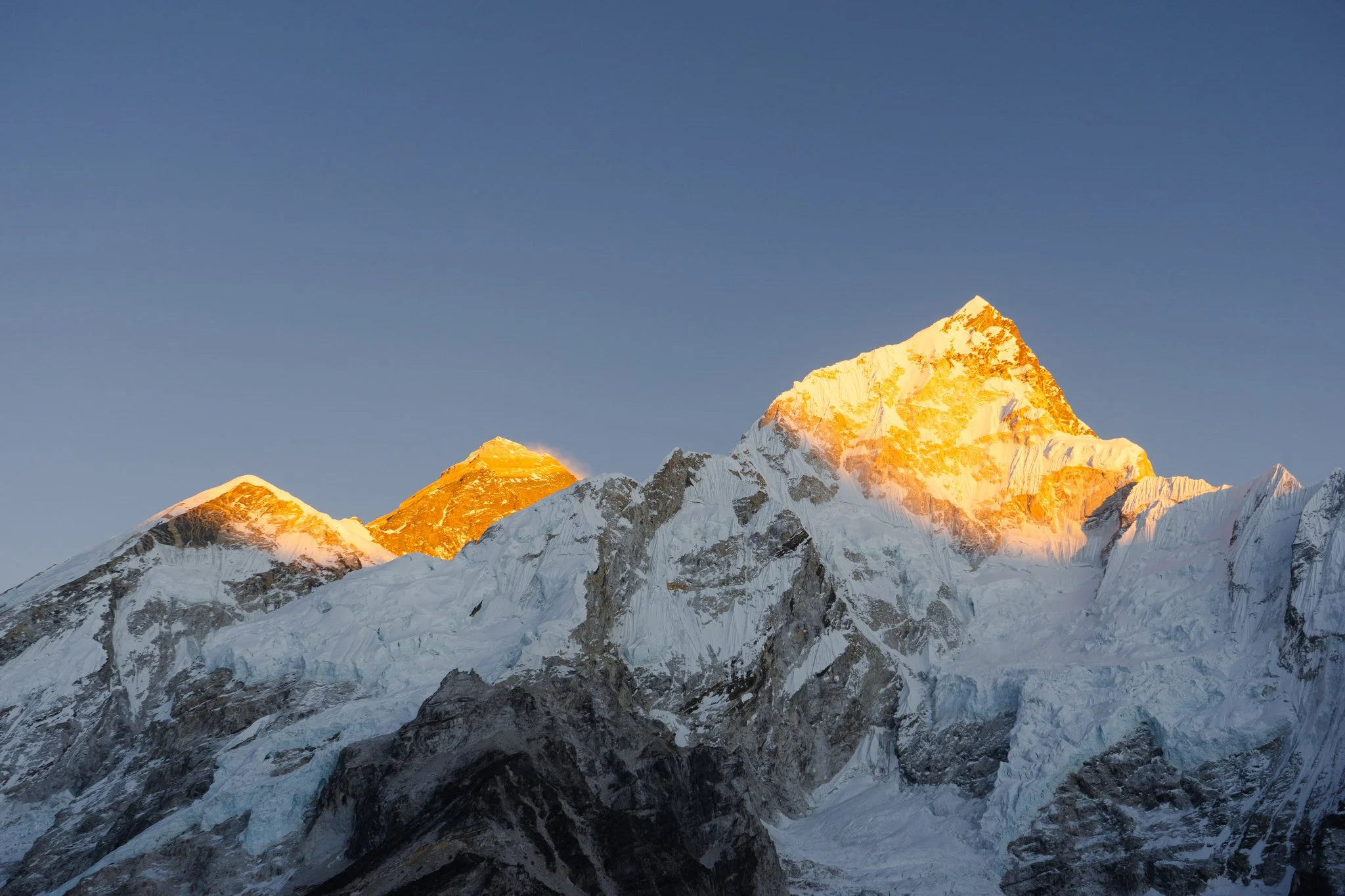Winter at Everest Base Camp (EBC): What No Guidebook Will Tell You
I trekked the classic Everest Base Camp (EBC) route in January 2020. Trekking in winter is an entirely different experience compared to the milder peak season due to the intense weather. Despite the freezing nights, it was absolutely worth it as I wanted to avoid the peak season crowds and be immersed in the stunning landscapes of the Himalayas. However, there were several things I hadn’t anticipated even after extensive research. Here are the insights I wish I’d known before my trip.
Here's a photo of us with our guide at Everest Base Camp
Be an Early Pooper!
Due to the high altitude, nighttime temperatures drop significantly in winter—often down to -15°C or lower. This causes the water in the toilet bowls in mountain huts to freeze overnight, sometimes clogging the drain by morning (yes, there are proper toilets in the huts). It’s wise to beat the morning rush if you want to avoid unpleasant smells and “overcrowded” toilet bowls. Hut owners usually flush everyone’s waste all at once in the afternoon when the water thaws a bit.
Do Not Attempt to Shower!
As tempting as it might be to enjoy a hot shower after a long day of trekking, don’t do it. Many of the showers are located outdoors or in poorly insulated rooms. Once the hot water runs out, your body loses heat quickly, and the freezing temperatures can lead to colds or even pneumonia. I went 10 days without a shower on my trek.
Expect Delays (Many Days)
Even though winter often brings clear weather, don’t expect smooth travel from Kathmandu to Lukla if you’re flying. The propeller planes used on this route have minimal equipment, and for safety, they only take off when visibility is over 12 kilometers. I waited three days in Kathmandu, anxiously hoping for our flight to Lukla. Our original plan was to complete the EBC trek in 12 days with two days for acclimatization at Namche Bazaar, but due to delays, we did the entire trek to Everest Base Camp and back in just 10 days. We felt the impact of altitude sickness and struggled to get enough rest. If you want to avoid disappointment, schedule extra buffer days. Alternatively, you could take a helicopter, though it’s over five times the cost of the plane!
Reapply Sunscreen — A LOT!
Trust me on this! I applied sunscreen once every morning, thinking it would be enough. However, in winter, the combination of snow reflecting sunlight and the high altitude makes the UV extremely strong. Make sure you reapply sunscreen every two hours. My tan lasted months after returning to London and while it could spark interesting conversations, it was also a bit embarrassing in social settings.
Perfect skin on Day 2 of the EBC trek
Check out my tan on the final day of the EBC trek!
Keep Your Camera Batteries Warm
Bring heat patches to keep your camera batteries warm if you plan to capture the breathtaking sunsets over Everest. In these conditions, camera batteries drain quickly and won’t last more than 10 minutes without extra warmth.
Watching the sunset over Mount Everest at the summit of Kala Patthar (5,643 m)
Forget About Social Media
Above 4,200 meters, mountain huts have little or no Wi-Fi. (This was in early 2020, pre-COVID.) Some huts may charge for Wi-Fi, which might allow you to send messages, but forget about Instagram—there won’t be enough bandwidth. Embrace the detox from social media and enjoy this once-in-a-lifetime experience without distractions.
One Outfit, Many Layers
Battling the cold, fatigue and altitude sickness, changing clothes becomes a low priority. I’m a minimalist, so I only brought extra underwear and inner socks. Good-quality merino wool clothing helps you avoid smelling unpleasant. With significant temperature fluctuations throughout the day, you’ll find yourself constantly adding and removing layers.
Carrying bags like a Sherpa
These are some of the things no one will tell You about trekking Everest Base Camp in Winter. If you’re planning your trek to the Everest Base Camp, I hope these tips help you prepare better for this incredible journey. Happy Trekking!






